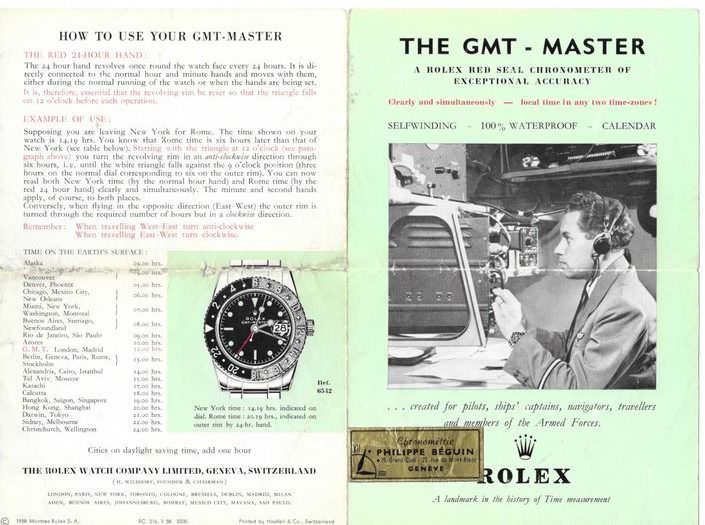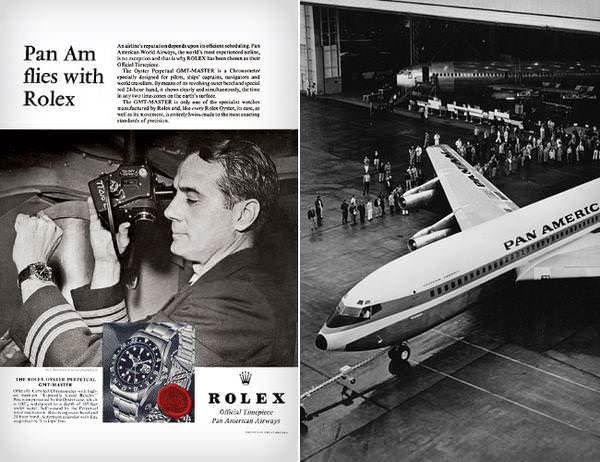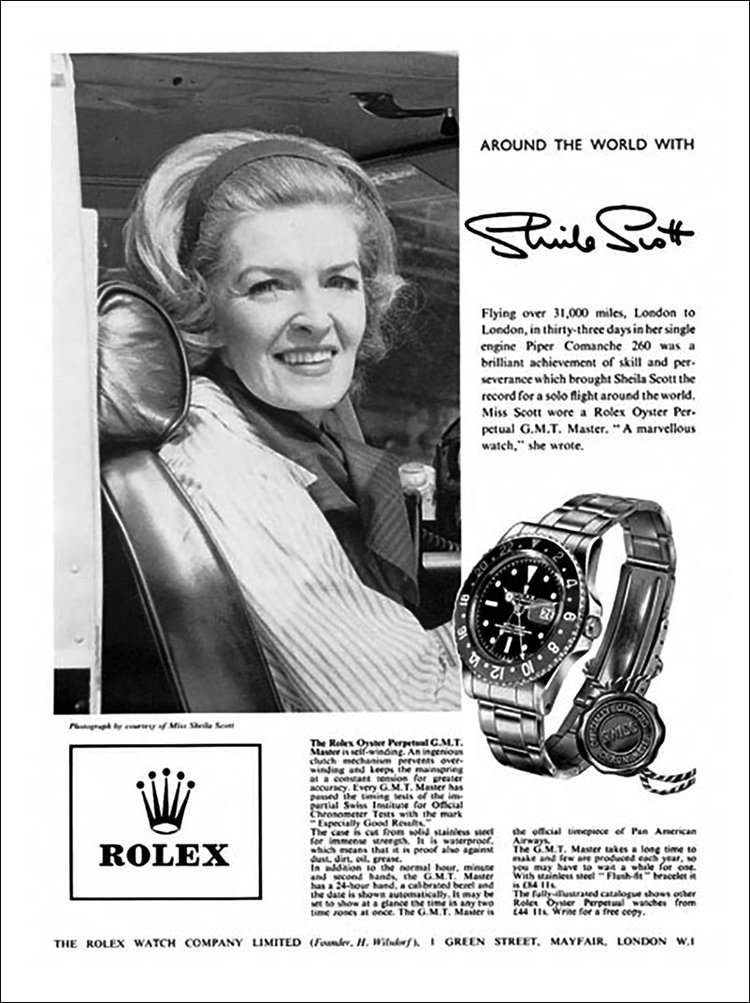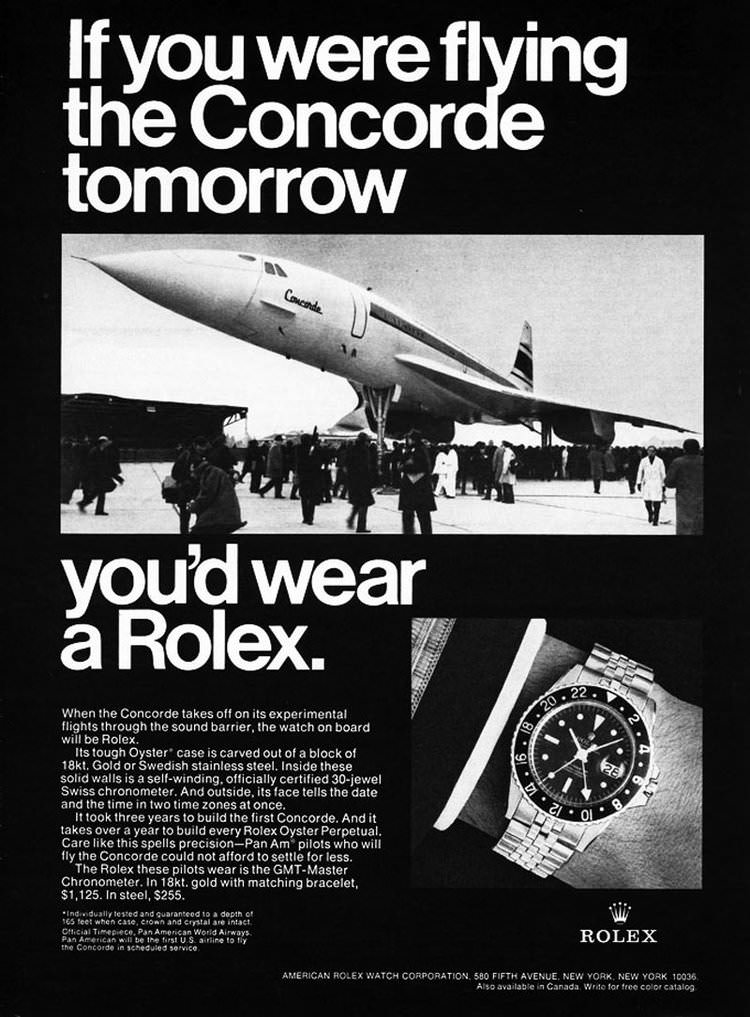By 1959, the GMT-Master had proven itself as a concept, and Rolex was ready to re-invent their multi-time zone pilots watch and give it a design that was entirely its own. The second generation of GMT-Master watches was released as the reference 1675, and represented a complete re-design of the GMT, both inside and out. Instead of sharing a case with the existing Turn-O-Graph, the reference 1675 GMT-Master received a new 40 mm case that now featured crown-guards for a larger and more robust overall appearance.

Inside, the reference 1675 benefitted from a new generation of movement. Originally fitted with the Caliber 1565, Rolex updated the reference 1675 GMT-Master with the improved Caliber 1575 around 1965, and then later introduced the convenience of the “hack-seconds” feature in 1971. To accompany the new generation of 15xx movements, the text on the dial of the reference 1675 GMT-Master was changed to “Superlative Chronometer Officially Certified” – an update over the “Officially Certified Chronometer” text that can be found on the dial of the reference 6542.

Production of the reference 1675 lasted over two decades, until Rolex finally replaced it with the reference 16750 in 1981. Due to its remarkably long production run and relatively early placement within the GMT-Master’s history, surviving examples of the reference 1675 can be found with an impressively diverse range of different dials, bezels, crown-guards, movements, handsets, and bracelets. Additionally, solid gold and two-tone (Rolesor) variants of the 1675 were produced under the reference numbers 1675/8 and 1675/3, respectively.
The reference 1675 received a glossy gilt dial and pointed crown guards until roughly the mid-1960s, when Rolex made the switch to matte dials and a larger, more squared-off shape for the GMT-Master’s crown-guards. By the late 1960s, the reference 1675’s 24-hour hand had significantly increased in size; and by 1971, Rolex had started offering the option of an all-black bezel insert, instead of the traditional red and blue insert that was originally intended as a nod to the company colors of Pan-Am Airlines.

Although the reference 6542 holds the title of the being the very first GMT-Master, the reference 1675 is the first watch that Rolex designed from the ground up to be a GMT. Additionally, the reference 1675 introduced a number of traits and features that have become defining characteristics of the GMT-Master line, and can still be found on the contemporary GMT-Master II watches that Rolex sells today.

Featuring an acrylic crystal, aluminum bezel insert, friction-fitted bezel, and non-quickset movement, the reference 1675 is a decidedly vintage timepiece that perfectly encapsulates the aesthetic of early Rolex GMT watches. Additionally since production of the reference 1675 lasted the entirety of both the 1960s and the 1970s, a remarkable amount of diversity exists within this single reference, and it is the only iteration of the GMT-Master that Rolex has ever fitted with both gilt and matte dials.

The GMT’s connection with Pan-Am gave the reference instant cachet, but the GMT was not only worn by airline pilots. The 1675 was also issued to US Air-force test pilots and NASA astronauts. Air-force pilot Pete Knight was wearing one when he set the all time speed record at Mach 6.7 and the GMT was worn by the crews of many Apollo missions. The 1675 has also been the Rolex of choice for a number of well known faces over the years as well. GMTs have famously been sported by everyone from Dizzy Gillespie and Marlon Brando to Pablo Picasso and Fidel Castro.
Due to the extensive range of different dials, handsets, movements, bezel inserts, and bracelets, well-preserved and early production run examples of reference 1675 GMT-Master watches have become popular targets for collectors, and have significantly appreciated in value – particularly in recent years. While it may not be the very first GMT-Master, the reference 1675 represents an important and pivotal point in the GMT’s history, when Rolex’s iconic multi-time zone watch first became a timepiece entirely of its own, unique design.
Click here to visit the shop and browse our collection of ref. 1675 GMTs.

Check out 'Reference Tracks' our Spotify playlist. We’ll take you through what’s been spinning on the black circle at the C + T offices.

Never miss a watch. Get push notifications for new items and content as well as exclusive access to app only product launches.
Sign up for our newsletter to receive updates and exclusive offers